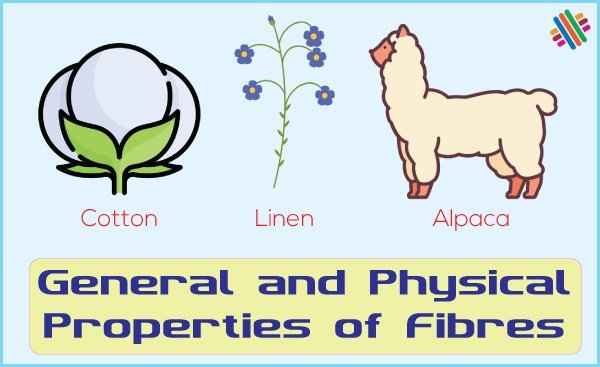General and Physical Properties of Fibres
Last updated on October 13th, 2023 at 09:48 pm
The fibre is the fundamental unit of which fabric is made. When a yarn is unraveled we can see fibre. Each of the tiny hair that makes up the yarn is fibre. Fibre is much resembled to hair in appearance of which cloths are made, e.g. denim, cotton, rayon, silk, nylon and polyester.

General Properties of Fibres
- Filament fibres: Filament fibres may be natural or man-made. They are measured in yards or meters. Single or filaments are grouped, together to make the yarn. Yarn made of single strong, smooth strand is known as mono-filament yarn, while the yarn made of several small filaments is called multi-filament yarn. Silk and all man-made fibres come in this class.
- Staple fibres: Staple fibres are short in length and are measured in inches. Their length may range from 1-18 inches. Cotton and all small cut fibres come in this class.
- Staple: The dimension and length of the fibre is known as staple. The length of the fibre is related to the spinning quality, firmness, smoothness, lusture, uniformity, draping quality and strength of the yarn and fabric.
- Strength: The strength of the fibre makes it bear the stress and strain of spinning. The strength of the fibre is relied on the atmospheric moisture.
- Elasticity: It is the pliability of the fibre which supports it bears the strain while they wrap around each other during twisting. This helps the fibre to oppose crushing and spring back to the original state.
- Texture: It comprises smoothness or roughness of the fibre.
- Uniformity: Uniform dimension supports the fibre to make better and smoother yarn.
Physical Properties
- Hygroscopic nature: It is the capacity of moisture absorbency of fibre. All natural fibres are hygroscopic, which also makes them stronger when they are wet.
- Thermal property: It is the heat resistancy of fibre, conductivity and melting point on which the fibre melts.
- Chemical property: It is the effect of acids, alkalis, bleaches and normal laundering reagents on the fibre.
- Density: It is the molecular structure of the fibres which provides them weight.
- Dimensional stability: It is the stability of the structure which prohibits the fibres from shrinking because of mechanical action, agitation, pressure, heat and moisture.
- Resiliency: It is the presence of strong hydrogen bonds which prohibits the fibres from wrinkling easily.
- Color fastness: It is the capacity of molecular structure to hold dye molecules to retain fabric colors and brightness in sunlight, moisture and laundering.



